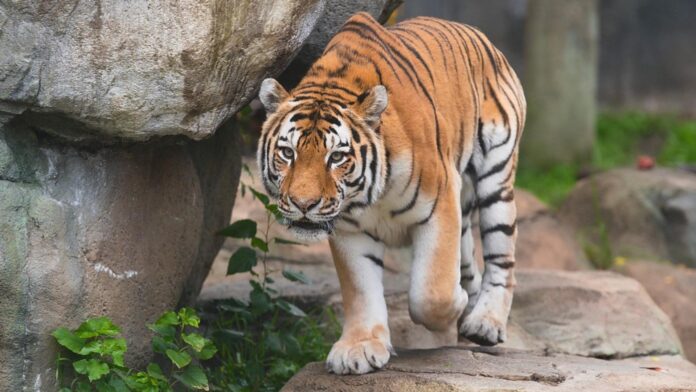Deeply mourned by all as a beloved Amur tiger prowling in the precincts of the Indianapolis Zoo, Pavel has recently died. His sudden demise sent shock waves through the visitors, animal lovers, and the zoo’s staff. He is not just another tiger; he is a symbol of wildlife conservation. Thousands attended in the presence of this majestic beast to raise awareness about issues surrounding endangered species.
Who Was Pavel?
An Amur tiger named Pavel, one of the world’s most endangered big cats, was born in a United States zoo and then moved to the Indianapolis Zoo in 2021. Since then, he became a star attraction. Known for his power and beauty, he played a key role in the zoo’s conservation mission with SSP as well.
What Happened to Pavel?
The Indianapolis Zoo reported that Pavel passed away during a routine medical procedure. Unfortunately, even after all standard procedures were followed by the veterinary team, complications arose, leading to Pavel’s inability to be revived. Such surgeries are generally safe, yet highly rare medical complications could happen even under professional care.
Zoo’s Reaction
The zoo issued a heavily dense public statement to mark the tragedy. It united in grief and acknowledged loss among visitors and staff. Most of the zookeepers usually work with Pavel daily. It is a personal matter for many of them. There is a thorough investigation of the incident by the zoo. Transparency remains high in such cases.
Effect on Conservation
The loss of Pavel is extremely important when viewed from the perspective of the fight for tiger conservation. The population of Amur tigers in the wild is critically endangered, with fewer than 500 tigers remaining in their natural habitat. Pavel was young and healthy, and many had projected his role in future breeding to help keep his species alive. Those hopes are now dashed. However, his story continues to consume and edify. Many were turned on to tiger conservation primarily because of him.
Public Reaction
The general public has an immediate and immediate expression of sadness for Pavel. In social media sites, photos, videos, and belongings are flourishing during the Pavel era. To the visitors come expressions of sorrow and pity for the zoo. Many praised the zoo’s honesty and care, but some critics raised concerns about its animal practices.
Conclusion: Honor the Memory of Pavel
The death of Pavel serves as a painful reminder of how fragile life is. Yet, his legacy continues to hold strong. His life drew attention to a species struggling for survival. Pavel’s tale will continue to make a difference due to ongoing conservation work. Let us remember him not just in the sense of loss but as an awareness factor and instiller of hope.








